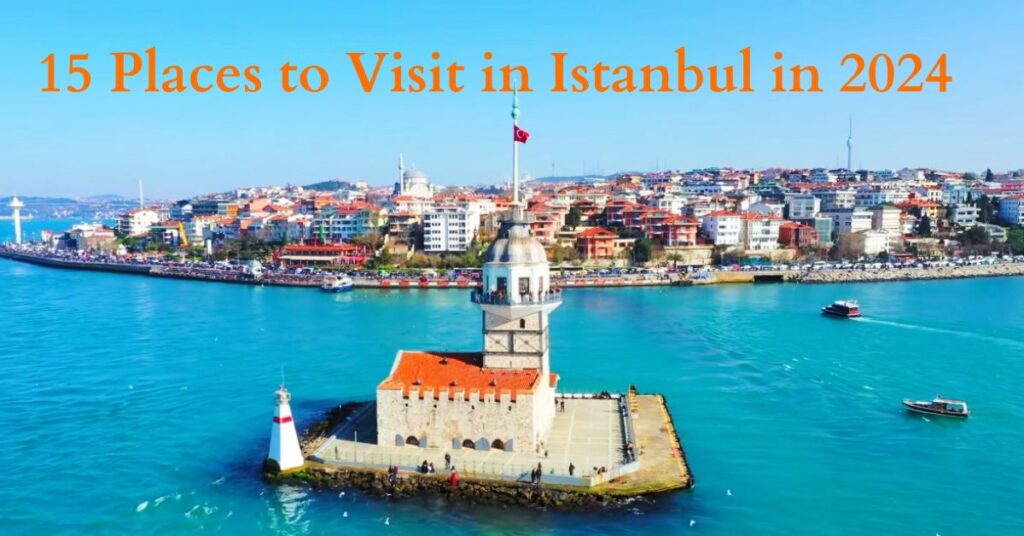In 2024, Istanbul is set to be a captivating city, with its top 15 places to visit in Istanbul. From iconic landmarks to hidden gems, Istanbul offers a rich cultural tapestry, historical wonders, and modern life. With its fusion of East and West, ancient and contemporary, Istanbul is a must-visit destination. From the Ottoman palaces to bustling bazaars, Istanbul offers something for everyone, from history enthusiasts to food lovers. With its unique blend of ancient charm and modern allure, Istanbul is an unforgettable adventure for travelers.
I’ve just put together a compilation of the top 15 must-visit spots in Istanbul for the year 2024. This list is a combination of suggestions from travel experts and my personal adventures. Let’s dive in and explore these amazing places!
1) Hagia Sophia
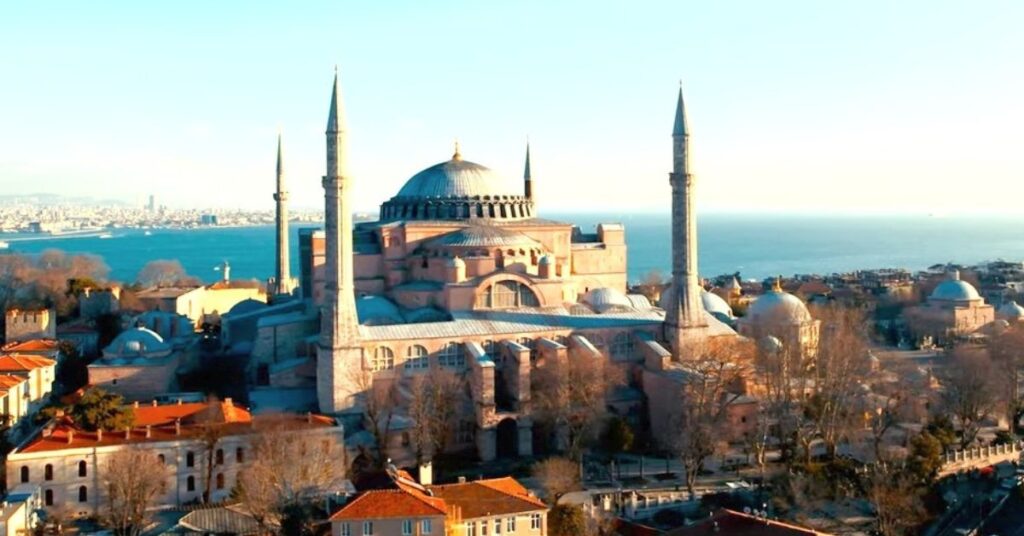
Hagia Sophia, the pride of Istanbul, stands as a remarkable testament to the genius of human architecture that transcends both time and religious boundaries. Originally constructed as a Christian cathedral by Emperor Justinian I of the Byzantine Empire in 537 AD, it held the title of the world’s largest church for nearly a millennium.
In 1453, following the Ottoman conquest, it was transformed into a mosque, adorned with four minarets and intricate calligraphic inscriptions and geometric patterns. After a significant restoration in 1931, it was reopened as a museum in 1934.
However, in July 2020, the Council of State made the decision to reclassify Hagia Sophia as a mosque, overturning its museum status. Today, Hagia Sophia stands as a powerful symbol of cultural unity and architectural brilliance, reflecting the city’s transition from Byzantine Christianity to Ottoman Islam.
2) Topkapi Palace
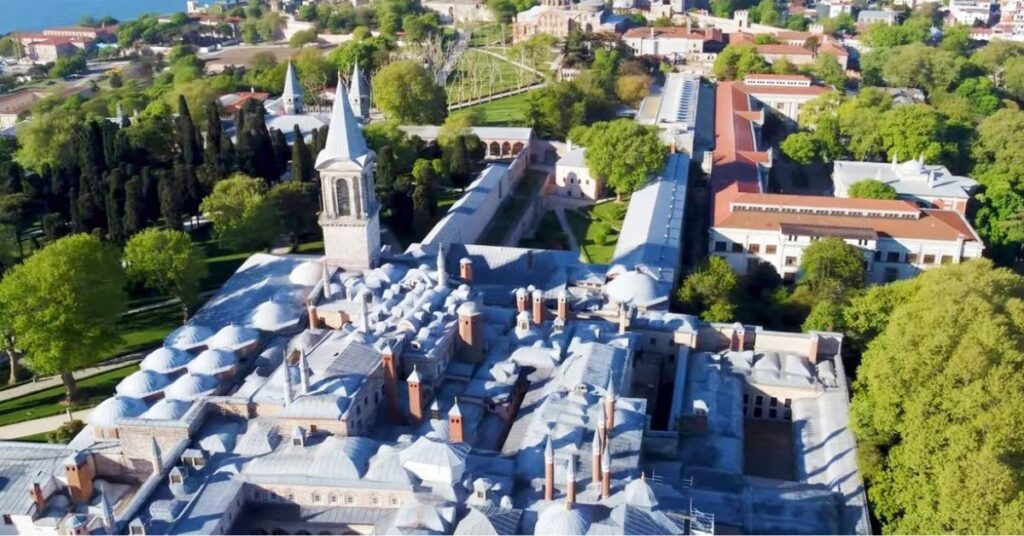
Topkapi Palace in Istanbul, built in the 15th century by Mehmed the Conqueror, is a symbol of Ottoman power and grandeur. It houses administrative offices, mosques, gardens, and a harem, and features intricate tilework and calligraphy. In 2024, it underwent restoration to preserve its historical significance.
Explore the Topkapi Palace:
- The First Courtyard welcomes visitors with Janissaries, the elite Ottoman infantry. Highlights include the Hagia Irene and the Ottoman Mint.
- The Second Courtyard houses the Imperial Council Chamber, where officials met with the sultan. Admires the exquisite Iznik tiles.
- The Harem is the private domain of the sultan’s wives, concubines, and children. Accessible with a separate ticket.
- The Treasury houses glittering jewels, robes, and weapons, including the Topkapi Dagger.
- The Holy Mantle Rooms house sacred Muslim relics, including Prophet Muhammad’s cloak and sword.
- Küçüksu Palace: A charming summer retreat on the Bosphorus shore.
- Topkapi Gardens: lush green havens with fragrant flower beds and serene courtyards.
- The Archaeological Museum houses an impressive collection of artifacts from ancient civilizations.
3) Blue Mosque (Sultan Ahmed Mosque)
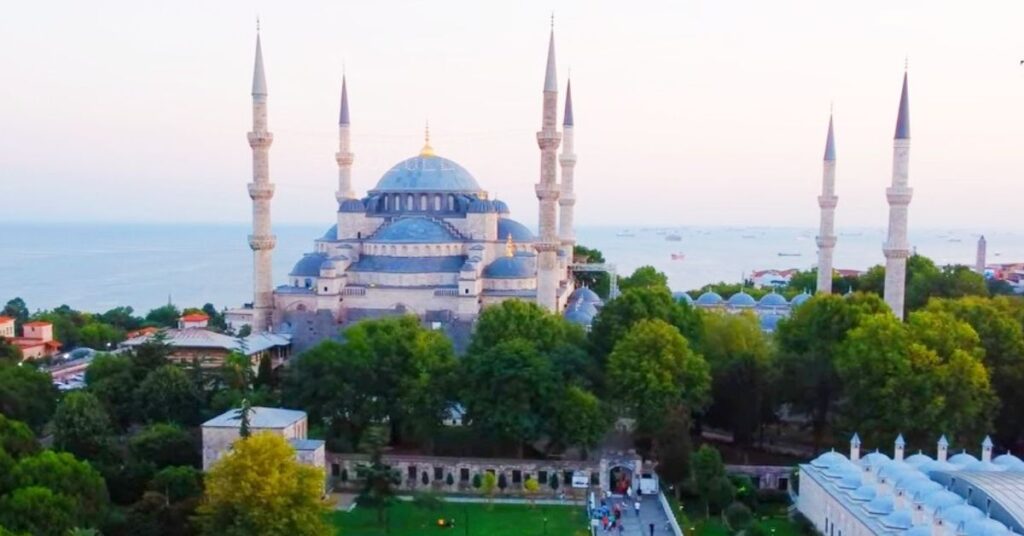
The Blue Mosque, also known as the Sultan Ahmed Mosque, is a 17th-century architectural masterpiece in Istanbul known for its striking blue tiles. It symbolizes Ottoman grandeur and spirituality, with six towering minarets, intricate calligraphy, and stained glass windows. Restored in 2024, it is a cultural landmark and place of worship, symbolizing the interplay of different cultures and faiths in Istanbul’s rich tapestry.
Overview Of the Blue Mosque:
- Built between 1609 and 1617 by Sultan Ahmed I, the mosque symbolizes Ottoman power and grandeur.
- Named “A Symphony of Blue” due to 20,000 hand-painted Iznik tiles, the mosque features intricate floral patterns, geometric designs, and Quran verses.
- The mosque’s architectural design is impressive, with a central dome, four semi-domes, and six slender minarets.
- Despite being a functioning mosque, visitors are welcome outside prayer times, but modest attire is advised.
- The mosque is part of a larger complex that includes a courtyard, a madrasa (religious school), and a tomb.
4) Galata Tower
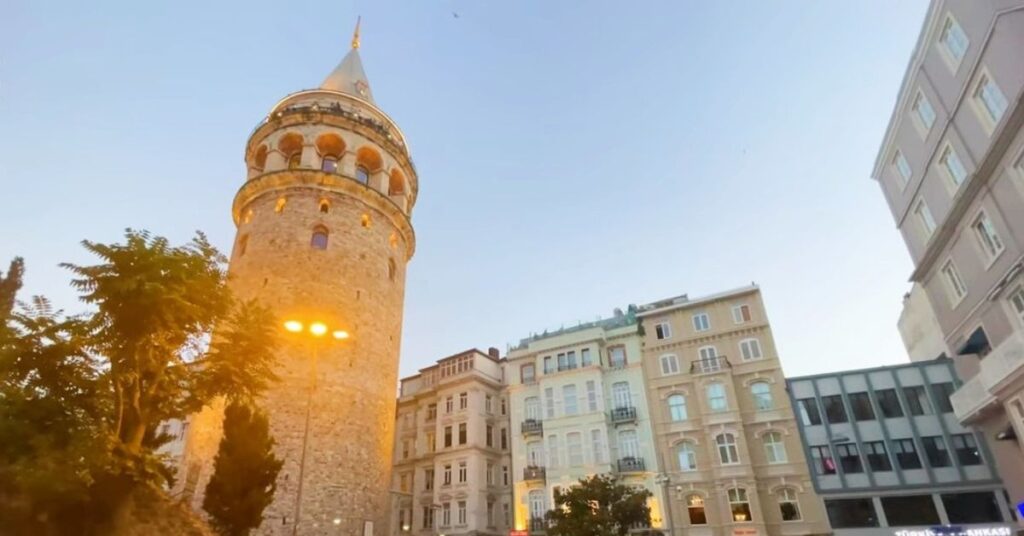
Galata Tower, a historical landmark on the European side of the Bosphorus, offers panoramic views of Istanbul and tells stories of a bygone era. Standing above the bustling district of Beyoğlu, it stands as a majestic sentinel overlooking the city’s vibrant landscape. Throughout its history, it has witnessed the city’s transformation from the Byzantine era to the Ottoman Empire, symbolizing resilience and cultural fusion.
Explore Galata Tower:
- Built in the 14th century by the Genoese, Galata Tower combines medieval and Ottoman architectural influences.
- Offers 360-degree views of Istanbul, including the Bosphorus Strait, Golden Horn, and cityscape.
- Serves as a symbol of Istanbul’s resilience and cultural richness.
- Surrounds the vibrant Galata district, known for its lively atmosphere and trendy cafes.
- Offers a magical experience during sunset, witnessing Istanbul’s transformation into a city of lights.
5) Istiklal Avenue
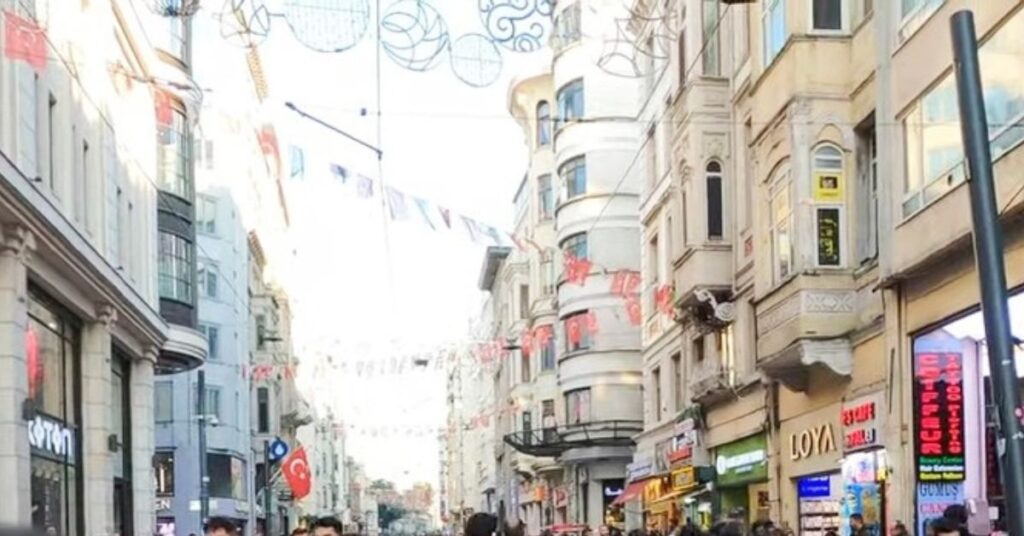
Istiklal Avenue, also known as Independence Avenue, is a popular pedestrian-only street in Istanbul’s Beyoğlu district. It is a hub of modern energy and culture, attracting locals and tourists alike. The street is lined with shops, cafes, and historical landmarks, making it a must-see for anyone seeking to experience the pulse of contemporary Istanbul. It is a must-see for any visitor to the city.
Explore Istiklal Avenue:
- Istiklal Avenue, spanning 1.4 kilometers, offers a mix of international brands, local boutiques, and unique shops.
- The avenue is home to historical landmarks like the nostalgic red tram, Saint Anthony of Padua Church, and Galatasaray High School.
- It’s a cultural hotspot, with art galleries, theaters, and cinemas offering a variety of cultural experiences.
- It’s a food lover’s paradise with diverse cuisines, cafes, and rooftop restaurants.
- Street performers and events keep the avenue vibrant, with impromptu dance performances and live music.
- As the sun sets, Istiklal transforms into a nightlife hub with trendy bars, clubs, and rooftop lounges.
6) Chora Church (Kariye Museum)
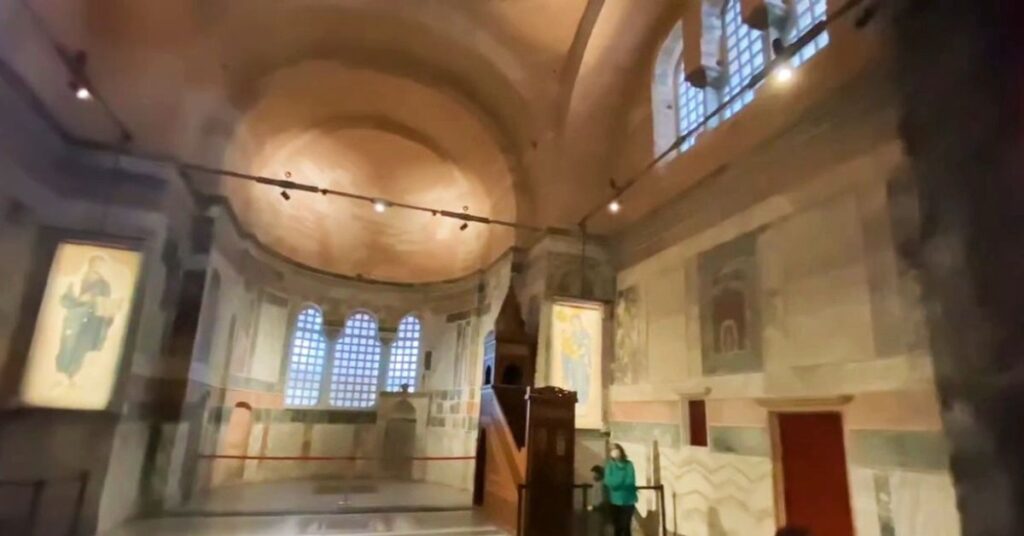
The Chora Church, also known as the Kariye Museum, is a UNESCO World Heritage Site in Istanbul, Turkey, known for its stunning mosaics and frescoes. Built in the 5th century as a monastery, it was rebuilt and expanded in the 11th century by Byzantine emperor Alexios I Komnenos. In the 14th century, it was converted into a mosque by the Ottoman Turks. In the 20th century, it was restored and opened to the public as a museum.
The church’s interior is filled with intricate mosaics and frescoes, depicting scenes from the Bible, saints, and other religious themes. The most famous mosaic is the Deesis, depicting Christ and Saint John the Baptist.
The church’s intricate design and intricate craftsmanship make it a must-see for visitors to Istanbul, showcasing the beauty and artistry of Byzantine culture.
7) Suleymaniye Mosque
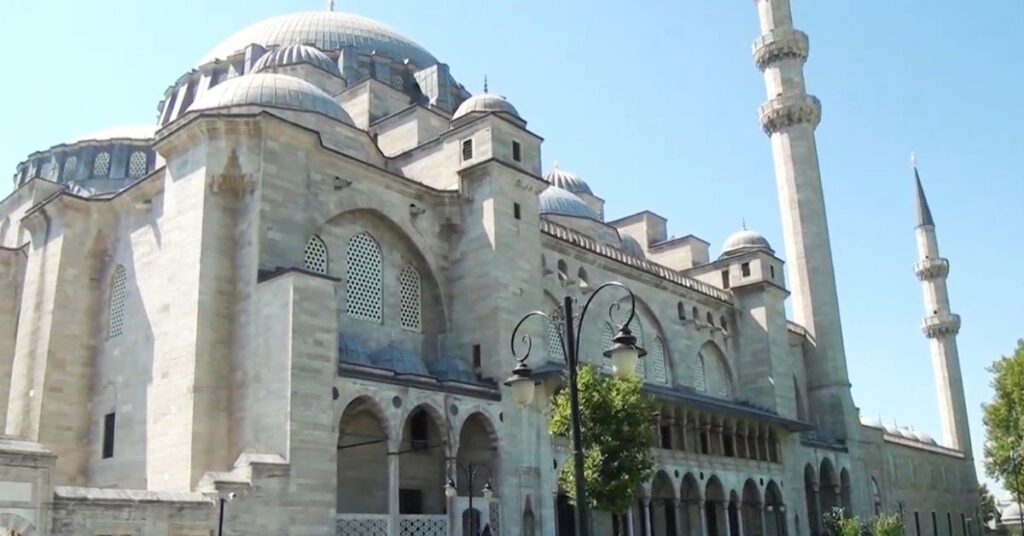
The Süleymaniye Mosque in Istanbul is a magnificent architectural masterpiece and a center of Islamic faith. Built between 1550 and 1557 by Sultan Süleyman the Magnificent, it symbolizes the Ottoman Empire’s power and piety. Designed by architect Mimar Sinan, it blends Byzantine and Ottoman architectural styles, creating a structure of unparalleled grandeur and elegance.
The mosque features a majestic dome, four minarets, a vast prayer hall, and intricate tilework. Beyond prayer, it housed a madrasa, a library, a hospital, and a soup kitchen. The mosque also houses the mausoleums of Sultan Süleyman and his wife, Hurrem Sultan.
An Ottoman Mosque’s Architectural and Historical Significance:
- Built in the 16th century by Ottoman architect Mimar Sinan.
- Features a vast courtyard, an imposing dome, and four towering minarets.
- Emphasizes symmetry and harmony, creating a serene atmosphere.
- Interior adorned with exquisite tiles, intricate calligraphy, and stained glass windows.
- Reflects the Ottoman Empire’s cultural and religious prominence.
- Named after influential ruler Sultan Suleiman, it served as a religious center, school, kitchen, and bathhouse.
- The expansive courtyard offers stunning views of the Golden Horn and Bosphorus.
- Today, it serves as a cultural center, hosting educational activities and community services.
- Houses a library with a rich collection of Islamic manuscripts and texts.
- Underwent meticulous restoration efforts to preserve its historical and architectural significance.
8) Istanbul Modern Art Museum
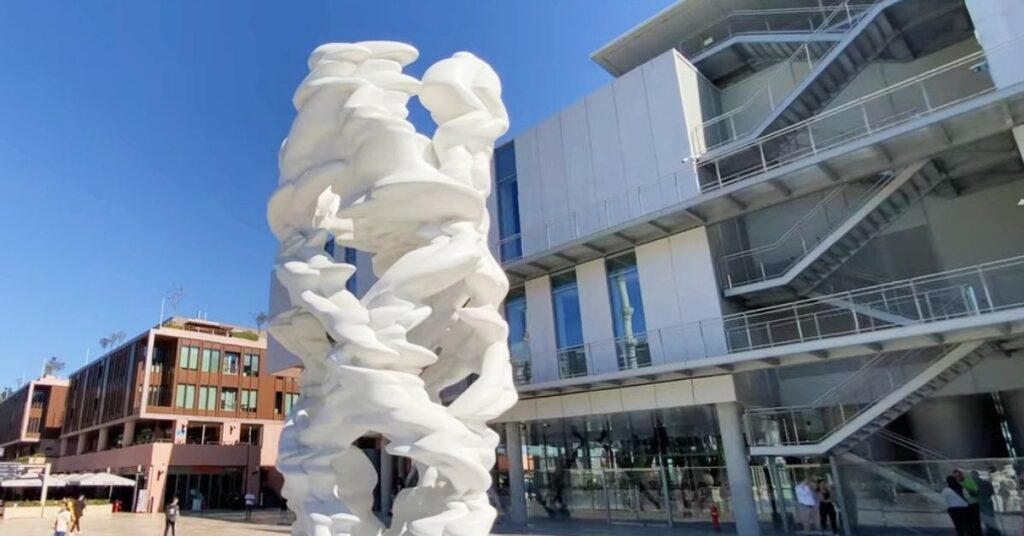
The Istanbul Modern Art Museum, located in Istanbul’s Beyoğlu district, is a contemporary art museum dedicated to promoting and preserving Turkish art. Established in 2004, it showcases various media, including paintings, sculptures, installations, video art, and photography.
The museum also extends its reach beyond Turkey, featuring temporary exhibitions featuring international artists and educational programs. The permanent collection features works by renowned Turkish artists and international names like Andy Warhol, Damien Hirst, and Jeff Koons. Istanbul Modern is a cultural hub, hosting events like film screenings, artist talks, workshops, and educational programs.
A Unique and Innovative Experience:
- Located in the trendy Karaköy district, it offers a panoramic view of the Bosphorus.
- Features rotating exhibitions of contemporary artworks, reflecting global artistic expression and Turkey’s cultural identity.
- Features works by Turkish and international artists, exploring themes of identity, tradition, and the intersection of global and local perspectives.
- Fosters artistic awareness and education through workshops, lectures, and outreach programs.
- The museum building, designed by Sedad Hakkı Eldem and renovated by Tabanlıoğlu Architects, integrates modern elements with the historical context.
- Offers a holistic cultural experience with cafés and event spaces serving as hubs for socializing and art discussion.
9) Istanbul Archaeology Museums
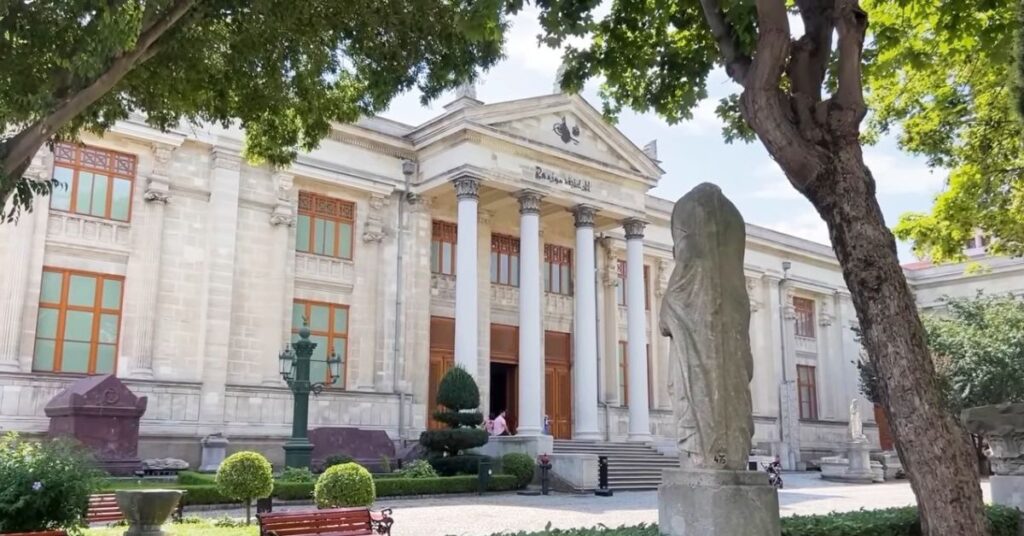
The Istanbul Archaeology Museums complex, located in Istanbul’s Sultanahmet district, is a must-visit for history enthusiasts. The museum consists of three separate museums: the Archaeological Museum, the Museum of the Ancient Orient, and the Museum of Islamic Art. It tells the fascinating story of diverse civilizations and eras, showcasing Istanbul’s role as a cultural crossroads and its historical legacies.
Three Unique Treasures:
Archaeology Museum:
- Houses over one million artifacts from the Hittites, Assyrians, Phrygians, and Greeks.
- Features a monumental sarcophagus of Alexander the Great, intricately carved reliefs from Nemrut Dağı, and delicate gold jewelry from Troy.
Museum of the Ancient Orient:
- Explores Mesopotamian cuneiform tablets, Egyptian mummies, and Hittite, Babylonian, and Assyrian empires.
- Features the Babylonian Processional Way, Nippur clay prisms, and Sumerian jewelry.
Tiled Kiosk Museum:
- It immerses visitors in Ottoman opulence with Iznik tiles.
- Displays the personal belongings and ceremonial items of Ottoman sultans.
10) Emirgan Park
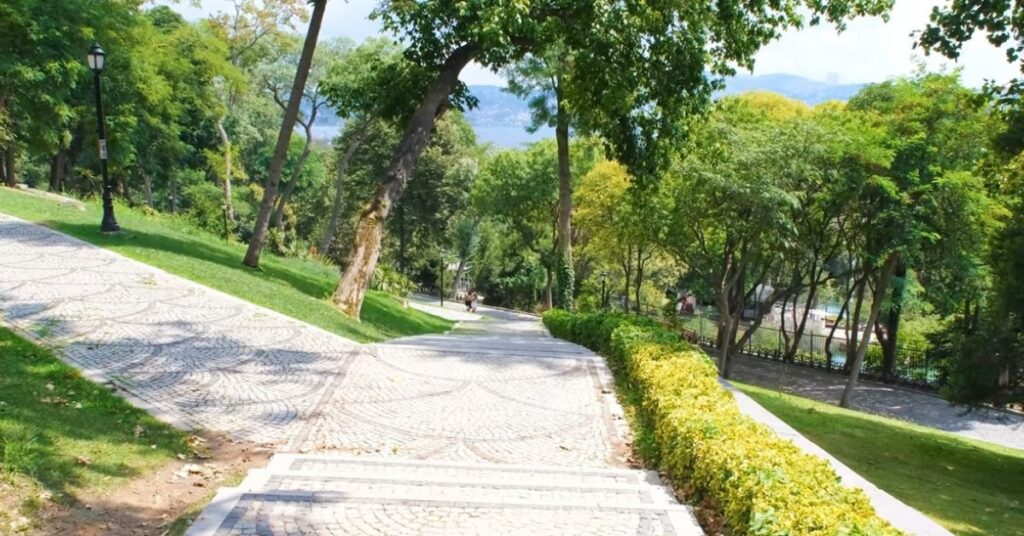
Emirgan Park, a 117-acre public park in Istanbul, Turkey, is a popular destination for locals and tourists. Located along the Bosphorus, the park is known for its natural beauty, vibrant flora, and serene atmosphere. Built in the 17th century by Ottoman Sultan IV. Mehmed, it was expanded by Sultan III. Ahmed. The park has been the site of significant events, including the signing of the Treaty of Paris in 1856. Today, it’s a popular spot for picnics, strolling, and people-watching, with attractions like two large ponds, a full-blooming rose garden, and a restaurant with stunning views of the Bosphorus.
Emirgan Park Attractions:
- The Rose Garden: Over 12,000 roses from 200 varieties bloom in May and June.
- A popular spot for relaxation and special events.
- Ponds: home to birds and fish, ideal for feeding and watching fish.
- Boat rentals are available from the park’s entrance.
- Restaurant: offers stunning views of the Bosphorus, serves Turkish and international dishes, and is a popular spot for sunset viewing.
11) Ortakoy
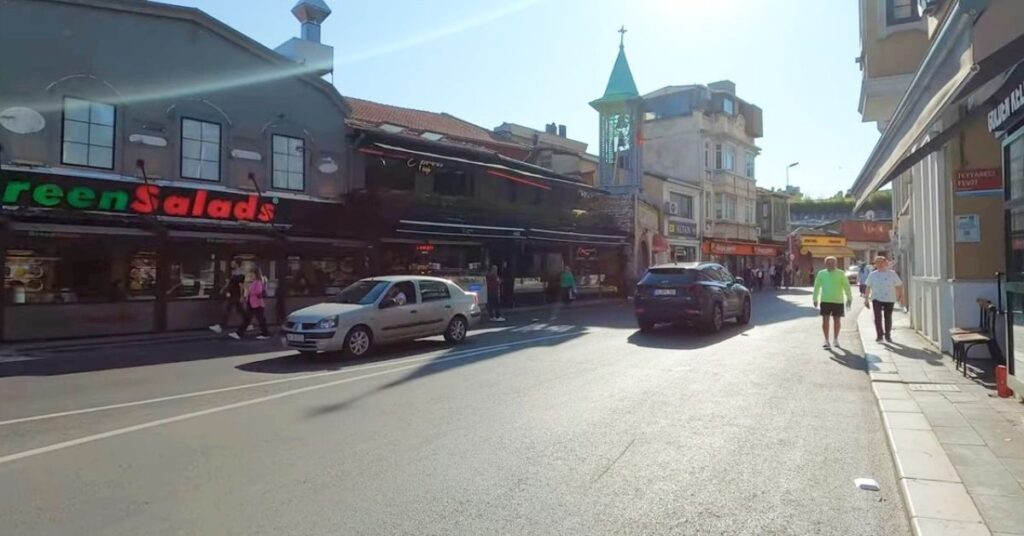
Ortakoy, located on the European side of the Bosphorus, is a charming neighborhood that blends historic charm with contemporary flair. Known for its iconic mosque, vibrant street life, and trendy boutiques, it offers a dynamic blend of tradition and modernity.
Ortakoy Overview:
- Ortakoy Mosque: A symbol of Ottoman Baroque architecture, illuminated against the evening sky.
- Bosphorus Bridge Views: Offers panoramic views of the modern bridge and waterway.
- Street Life and Markets: Various markets, shops, and vendors offering a variety of treats.
- Boutique cafes and restaurants offer a range of dining options, from traditional Turkish mezes to international cuisine.
- Art and Culture Hub: hosts events, exhibitions, and festivals, with galleries showcasing local and international artists.
- Nightlife and Entertainment: Turns into a lively nightlife destination with trendy bars, clubs, and lounges along the Bosphorus.
- Historical Charm: Retains traditional Ottoman houses, cobblestone streets, and a fishing village essence.
12) Balat
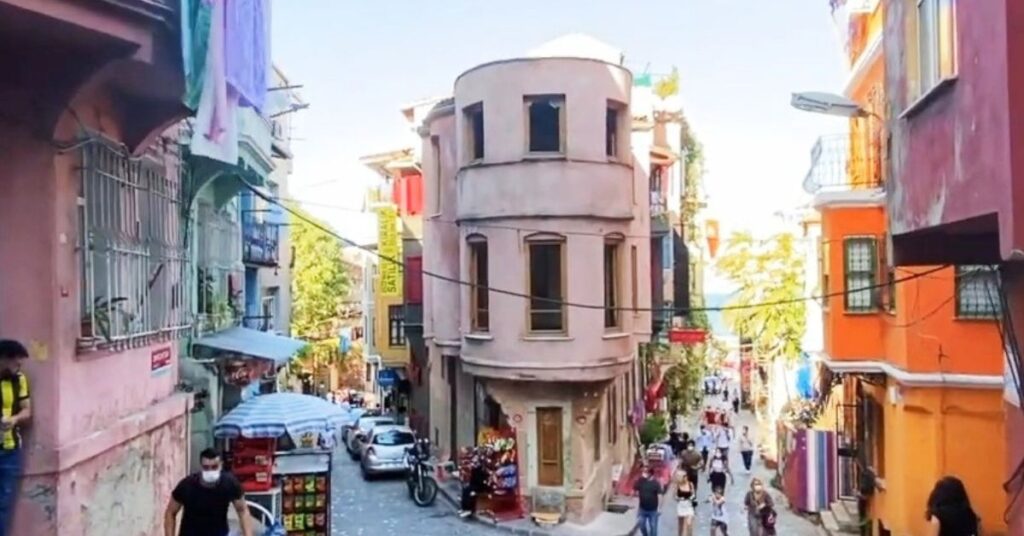
Balat, located on the Golden Horn, is a vibrant neighborhood that embodies Istanbul’s rich cultural heritage, offering visitors an immersive experience through its narrow cobblestone streets, vibrant houses, and rich history.
Balat’s Cultural Highlights:
- Colorful Architecture: Traditional Ottoman houses in shades of red, blue, yellow, and green create a picturesque backdrop.
- Historical Synagogues and Churches: Synagogues like the Ahrida Synagogue and churches like the Church of St. George reflect the multicultural history of the neighborhood.
- Street Art and Murals: Murals and graffiti add a contemporary flair to the neighborhood, reflecting diverse cultural influences.
- Eclectic Markets: Boasts a sensory feast with antique shops, vintage boutiques, traditional Turkish bakeries, and spice stalls.
- Fener: A Sibling District: Adjacent to Balat, Fener features the historic Greek Orthodox Patriarchate and labyrinthine streets.
- Cultural Diversity: Balat is a melting pot of cultures, reflecting Istanbul’s cosmopolitan identity.
- Coffeehouses and cafes: Provide a perfect setting for locals and visitors to enjoy Turkish coffee, indulge in traditional sweets, and engage in leisurely conversations.
13) Rumeli Fortress
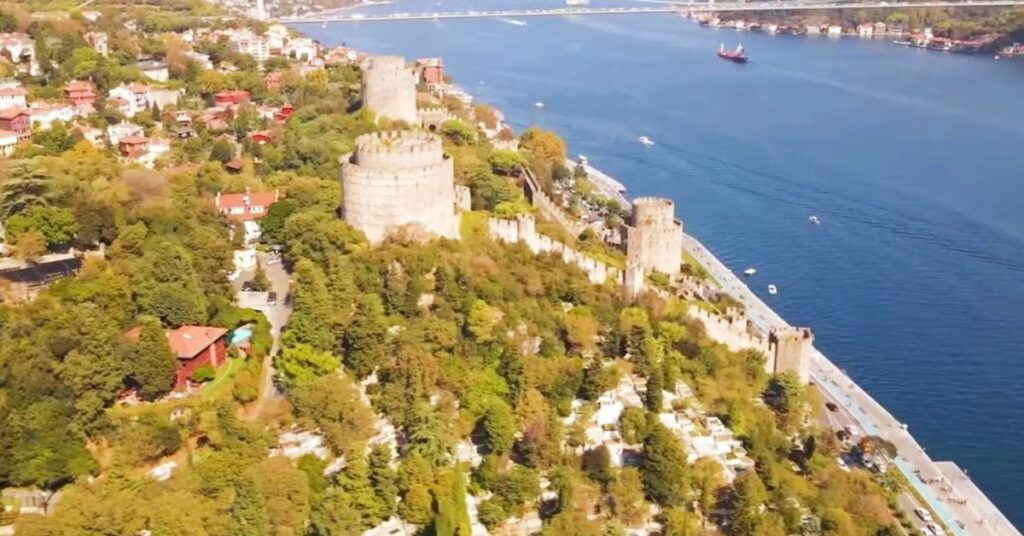
Rumeli Fortress, a UNESCO World Heritage Site in Istanbul, Turkey, is a significant Ottoman military and strategic landmark built in 1452 by Sultan Mehmed II. The fortress features three towers: the Great Tower, the Middle Tower, and the Small Tower. Built using stone and brick, it was crucial in the conquest of Constantinople, using cannons to weaken defenses and control the Bosphorus Strait. After the conquest, the fortress served as a customs checkpoint, prison, and military base. Today, it is open to the public, offering visitors the opportunity to explore the towers and the fortress’s impressive architecture.
Explore Rumeli Fortress:
- Constructed in 1452 as part of Sultan Mehmed II’s plan to secure control of the Bosphorus.
- Characterized by sturdy walls and imposing towers overlooking the Bosphorus.
- Designed to control and defend the crucial waterway against potential invasions.
- Played a pivotal role in the events leading up to the fall of Constantinople in 1453.
- Military architecture showcases the Ottomans’ military engineering expertise.
- Today, Rumeli Fortress serves as an open-air museum with panoramic views of the Bosphorus and surrounding landscape.
- Besides its historical significance, Rumeli Fortress has become a venue for cultural events and concerts.
14) Pierre Loti Hill
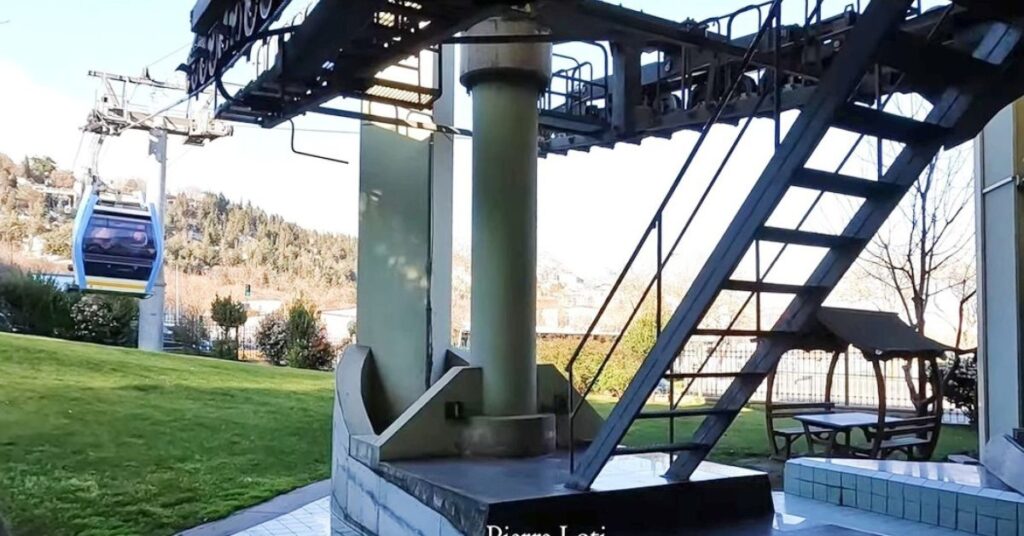
Pierre Loti Hill, located in Istanbul’s Eyüp district, offers a romantic escape with panoramic views of the city and the Golden Horn. Named after French novelist Pierre Loti, who frequented the area in the late 19th and early 20th centuries, the hill is known for its tranquility, scenic beauty, and nostalgia. It is also home to the Eyüp Sultan Mosque, one of the oldest mosques in Istanbul, built over the tomb of Abu Ayyub al-Ansari, a companion of Prophet Muhammad. The surrounding Eyüp Cemetery is a vast and atmospheric burial ground for Ottoman sultans and dignitaries.
Pierre Loti Hill Visit:
- A nostalgic cable car ride, known as the “teleferik,” takes visitors from the Eyüp district to the summit.
- The summit offers a panoramic view of Istanbul and the Golden Horn, particularly captivating during sunrise or sunset.
- Pierre Loti Café, named after the French poet, provides a tranquil setting for relaxation and ambiance.
- The hill holds historical significance, as Pierre Loti found inspiration in Istanbul during his visits.
- The Eyüp Sultan Mosque, a significant pilgrimage site, is adjacent to Pierre Loti Hill, offering a holistic experience.
- Pierre Loti Hill exudes a romantic atmosphere, making it a popular destination for couples and quiet escapes.
15) Kucuk Ayasofya Mosque (Little Hagia Sophia)
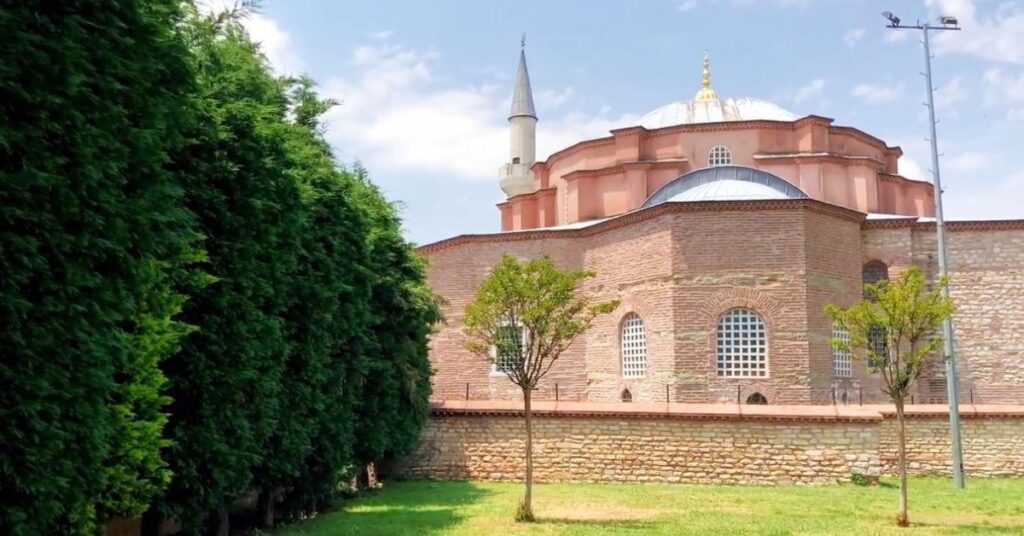
Küçük Ayasofya Mosque, also known as “Little Hagia Sophia,” is a former Greek Orthodox church in Constantinople, built between 532 and 536. Converted into a mosque during the Ottoman Empire, it was built by Byzantine Emperor Justinian I and his wife Theodora to rival the Hagia Sophia. Despite being damaged in an earthquake in 553, it continued to be used by the Greek Orthodox Church until the Ottoman conquest in 1453.
Kucuk Ayasofya Overview:
- Built as a church by Byzantine Emperor Justinian I in the 6th century, it was initially named the Church of Saints Sergius and Bacchus.
- The architectural design mirrors that of the larger Hagia Sophia, showcasing Byzantine period artistry and engineering.
- Known for its intimate and elegant interior, with a central dome adorned with mosaics and geometric patterns.
- Underwent a 16th-century Ottoman transformation into a mosque, integrating Islamic elements with the Byzantine structure.
- Surrounded by a peaceful courtyard and gardens, offering a tranquil escape from urban life.
- Remains of Byzantine mosaics and Islamic calligraphy highlight the mosque’s cultural and religious synthesis.
- Efforts are ongoing to restore and protect the mosque’s historical integrity.
- Despite its historical significance, Kucuk Ayasofya offers a more intimate and contemplative visitor experience.
